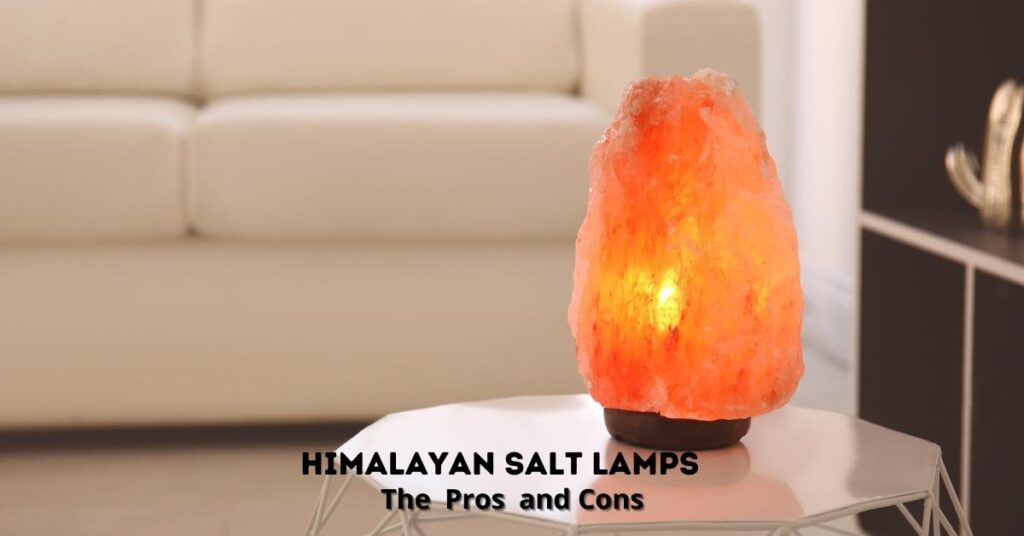Himalayan salt lamps have been called one of the hottest items on the market, and with good reason: they look great, are versatile, and are believed to have positive health benefits. They’re used as light sources, purifiers, and decorations in offices, hotels, and homes all over the world, but before you jump on board with this trend, read this article to learn what the pros and cons of Himalayan salt lamps are so you can make an informed decision about whether or not they’re right for you.

What are Himalayan salt lamps ?
Salt lamps are made out of natural salt crystals. They are often called “Himalayan” salt lamps because they are found in the foothills of the Himalayan Mountains. These lamps have been popularized as a natural, non-toxic alternative to chemical-laden air fresheners.
They are used for their health benefits, which include helping with sleep, clearing the air of pollutants, and reducing allergy symptoms. Salt lamps have low EMF energy that can be felt by some people. Some people feel relaxed around them while others feel irritated or uncomfortable.
But, do salt lamps actually work? What are the pros and cons of owning one in your home?
Himalayan salt lamps benefits
Salt lamps are a trendy decoration in many households for their aesthetic and purported health benefits. The crystal lamps can be a beautiful addition to any room in your home. These lamps also come with some health benefits, such as providing anti-bacterial protection against allergies and asthma.
- The salt lamps can help with asthma, allergies, and all other respiratory diseases . It is an excellent natural remedy that helps clear mucus from the lungs.
- Himalayan salt lamps emit a soft light that is thought to create a calm and relaxing atmosphere and can aid in de-stressing and lower levels of anxiety
- Soothing sound of the ocean is created by the electronic device that produces negative ions which are said to have healing [1] properties for those who suffer from stress or depression.
Cons of Himalayan Salt Lamps
When operating any light fixture, you’ll want to take precautions regarding heat. These lamps do not produce a significant amount of heat but they are heated electrically which means they will get hot. This could burn a child if they were to reach under it while it was on or cause problems with your pets who are curious by nature. You will want to make sure that you do not leave your lamps on unattended and that you keep small children away from them when they are turned on.
- Himalayan salt lamps are a relatively new trend in the home décor industry. However, many homeowners worry about the potential health hazards associated with the lamp’s electric wiring and ionizer running 24 hours a day.
- Manufacturers can label any lamp a Himalayan salt lamp, even if it has none. So, how can you make sure you’re getting what you want? Look for lamps that state 100% Pure Himalayan Rock Salt on them somewhere. If they don’t say that, they likely have little to no real health benefits at all.
- Not all salt lamps are created equal. A true salt lamp should be solid; think of a light bulb made out of rock salt. If your lamp has a hollow interior or is built into some sort of other structure, it’s not going to do much more than sit there looking pretty.
- No longer are the salt lamps as pricey as they used to be, still, even their inexpensive versions can cost a lot if you’re looking for a high-quality lamp.
Conclusion
While it’s true that salt lamps look nice, that is not their main selling point. More than anything else, they are supposed to help you sleep better by emitting negative ions into your home environment. Should You Get One? The lamps work by using ionizers to purify and cleanse your air, which eliminates allergens, spores, bacteria, dust mites, pollution particles and other contaminants in your home. They also produce negative ions that can alleviate symptoms associated with asthma and allergies. However, some experts warn against putting them too close to your skin because they emit electromagnetic radiation that’s potentially unsafe for you.

Lifebing is driven by an unrelenting passion for promoting health and well-being, our team is wholly committed to curating exceptional content and immersive experiences.
